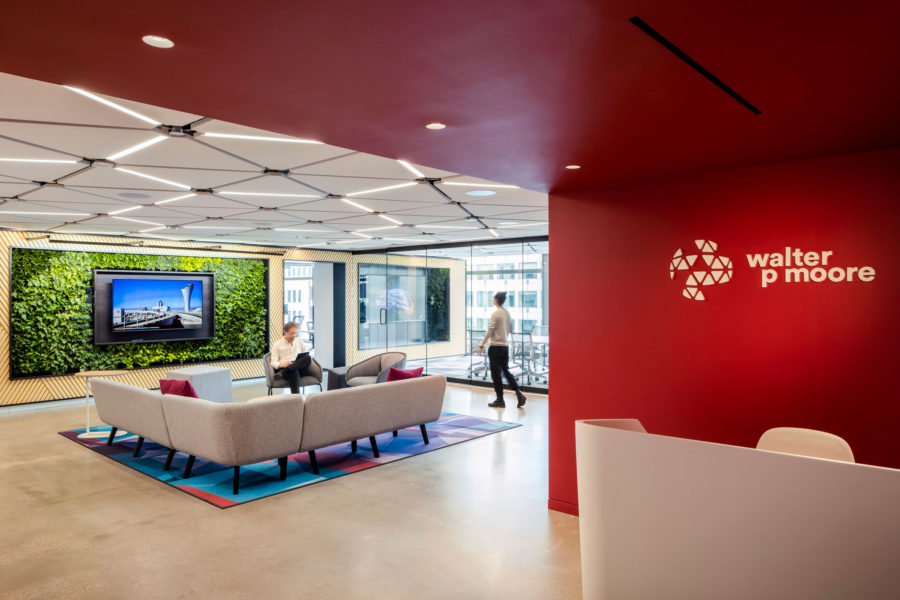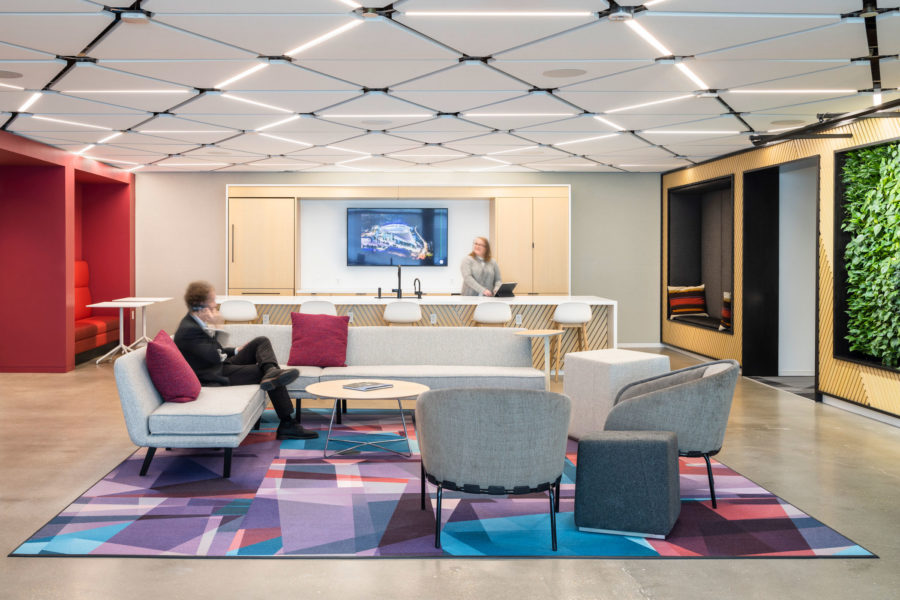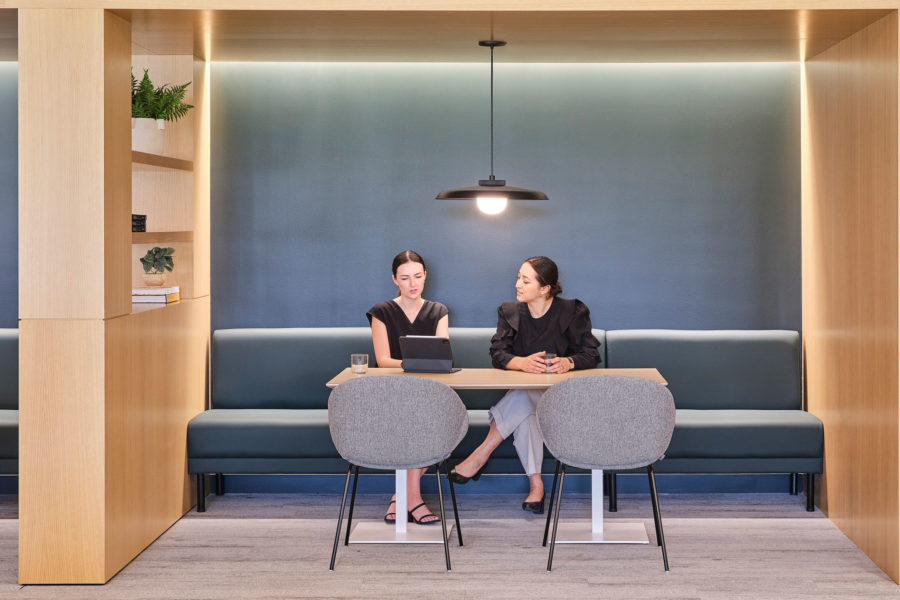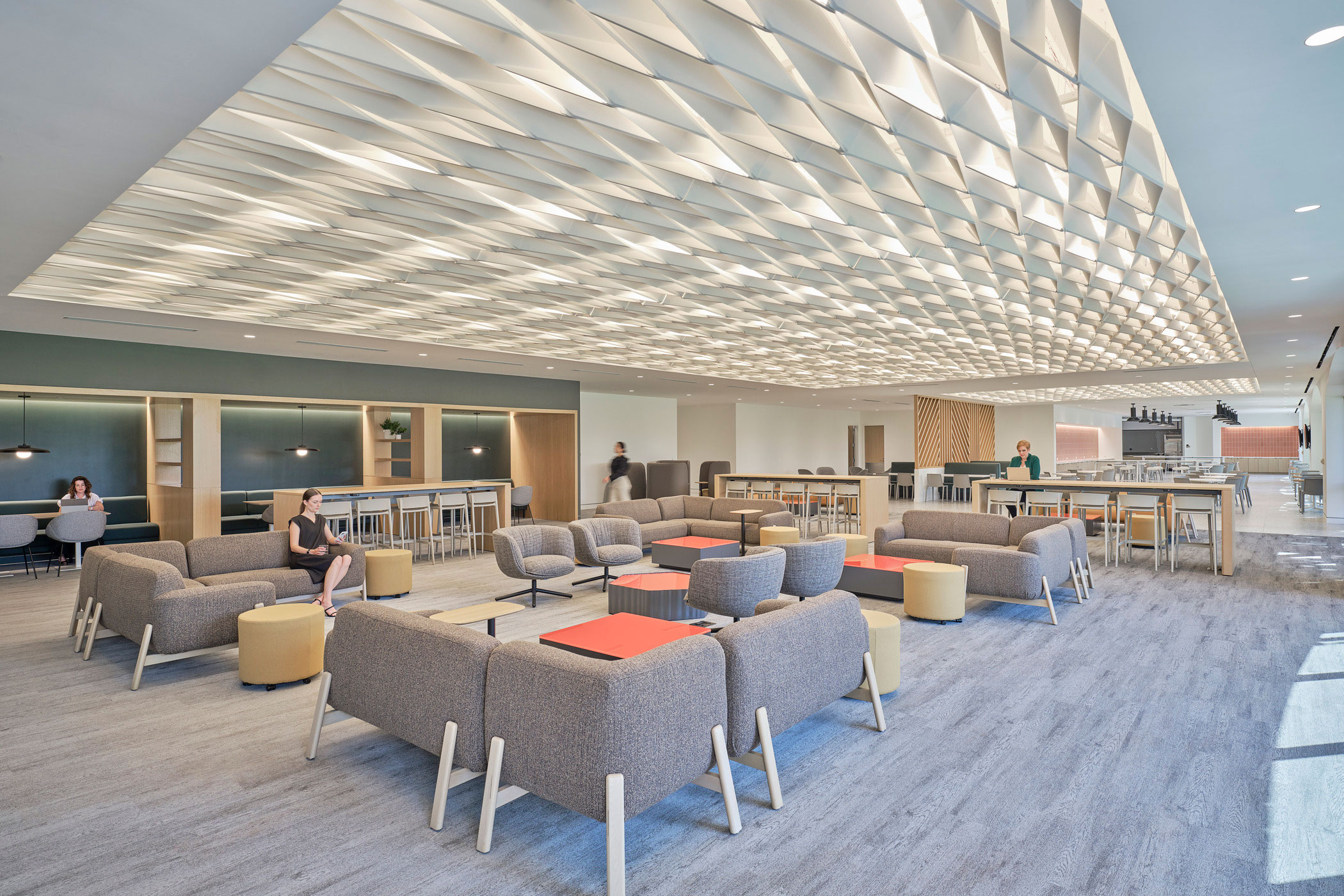Story at a glance:
- Architects and designers are demanding less embodied carbon, healthier ingredients, and ethical supply chains.
- Engineered flooring is a popular choice to meet budget and timeline.
- Natural products like cork, tile, wood, and rubber are popular choices for meeting sustainability and health goals.
The conversations architect Allison Smith is having around flooring are a lot more “sophisticated” these days. Instead of focusing solely on aesthetics and durability, building owners and designers are more aware of the health and sustainable impacts of their choices.
Owners and designers are demanding more from flooring manufacturers—they want to reduce embodied carbon and know what’s in their products, and they care about supply chain/labor conditions. “I was recently working on a project where there were a lot of conversations around embodied carbon and the flooring selected for the project. As we were doing a life cycle analysis of the interior space, we found that although the product looked sustainable on the outside, it was not performing well from an embodied carbon standpoint,” says Smith, sustainable design leader at HKS. “We continue to have conversations about how we can do better.”
When Smith is working on a project, she looks for products that are lowest in embodied carbon and better performing from an embodied carbon perspective. “Which translates to other environmental concerns related to the product,” she says. She chooses products with the lowest health impact and least harmful ingredients. She looks for low-emitting products for use in any internal environment. “There are many ways to do this, but we look at certifications like FloorScore and GPI to understand the products.”
Engineered Flooring

The HKS design team says sealed concrete was largely used in reception, pantry, and some back-of-house spaces at Walter P. Moore. Photo courtesy of HKS
More people are turning to floor alternatives like engineered flooring now than ever before. Many engineered flooring products cost less and last longer than their natural counterparts. They can also be a solution for supply chain issues. “Designers and architects are looking for alternatives to fit the budget and timeline. That has been especially challenging with supply chain issues,” says Gracie Andraos, director of design at HKS. Engineered flooring like hardwood can also be less time-consuming to install. The boards come pre-stained and can be glued or locked into place.
But some engineered flooring products do come with downsides. “Often these products have a host of environmental and health issues. They are composite products that are not able to be disassembled and recycled. We will never be truly circular if we are only using composite materials in our buildings,” Smith says. Some engineered products have health implications, containing ingredients linked to cancer or reproductive health. Looking for health declarations and product certifications can ensure you have the safest, most sustainable product for your space.
There’s also been an increase in dematerialization. “People are asking the question, ‘Do we even need a floor here?’” Smith says. “Instead of installing flooring they are doing a sealed concrete and identifying the needs of different spaces. It is one way to save money.”
Designers decided to go that route at the Walter P. Moore office in Washington, D.C. Sealed concrete was largely used in reception, pantry, and some back-of-house spaces while other areas were covered in low-emitting and product transparent carpet by Milliken. The project earned LEED v4.1 Commercial Interiors LEED Gold certification, making it the highest scoring project in the US under this rating system, according to HKS.
Sustainable Choices

The Walter P. Moore project designed by HKS earned LEED v4.1 Commercial Interiors LEED Gold certification. Photo courtesy of HKS
While Smith says the most sustainable option would be to avoid installing flooring, that is not always possible. When identifying environmentally friendly options for a space, she often steers clients to wood, tile, cork, rubber, and any natural product. “Cork has a soft look, and it is a carbon sink material,” she says. “Natural materials store carbon, so they are inherently low in embodied carbon.”
Since it’s a natural product, cork can be composted and returned to the circular environment. It is hard-wearing and can last in high-traffic spaces for decades. It also has some sound absorption properties, helping to mitigate sound travel and offering softness underfoot. It has an NRC rating of 0.7. But, as with all natural products, cork also has some downsides. It is not ideal around water. It does have some water resistance but is not a good option for a kitchen or bathroom.
Non-tire-derived rubber comes from natural latex and has a lot of benefits. It is durable and resistant to liquids and impact. It can be a great choice in gyms and health care environments where people spend significant time standing and moving around. Tile is also a natural product, often made from clay and shale. It is very durable and long-lasting, and it can be moisture resistant.
Another choice that is increasing in popularity is liquid linoleum. It is applied as a liquid, eliminating joints, and has similar benefits to regular linoleum. It comes in a wide range of colors and is durable. It is a natural product and comes in PVC- and VOC-free options with no Red List ingredients. “The core idea is these are more natural products and, as such, can support a more circular economy. At end-of-life, they can be recycled and useful.”
Aesthetic Needs

Chilewich is a woven material that’s somewhere between hard surface and carpet, according to HKS. Photo courtesy of HKS
As interest in sustainability and health of flooring products amps up, so are trends to bring the feel of home into commercial spaces. “We are seeing a trend to infuse a sense of hospitality and residential aspects in all of our commercial work,” Andraos says. “Who wants to sit in a sea of workstations? It is about the user experience.” That has been especially important to designers post-pandemic.
Designers are going beyond the typical hard surface materials like carpet, porcelain, or ceramic tile and looking for different color and graphic combinations. “We are looking at how to go beyond what people typically think of as corporate design. We are tying in feelings of hospitality and welcome,” Andraos says.
One product Andraos is seeing more is Chilewich—a woven material made of TerraStrand. “It is in-between hard surface and carpet, semi-hard and semi-soft,” she says. TerraStrand is free of lead and phthalates; it’s essentially yarn softened with a plasticizer derived from soybeans rather than petroleum. It is becoming popular in cafes, lounges, and other amenities spaces, according to the HKS design time. It creates a homey look, is soft underfoot, can absorb sound, and is highly durable. That is why designers chose it for the amenities space in the former Dr. Pepper headquarters, now a multi-tenant building, in Plano, Texas.




